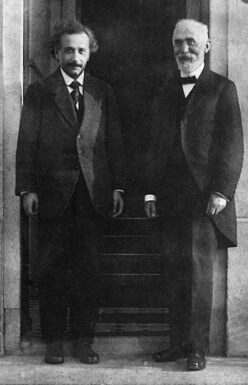Example
From a tower (height : 50 m) an object is projected horizontally with a velocity of 20 ms-1

Ignoring the air resistance:
a. Determine at what place the object hits the ground, ignoring the air resistance ?
b. With what velocity does that happen ?
c. With what angle the object hits the ground ?
Solution:
The directions to the right and upward have been chosen as positive.
a. In the vertical (y) direction the movement has a constant acceleration due the gravity.
ay = g = – 9.81 m s-2. Initial velocity in y direction = 0 ms-1
Δ Y = ½ g t2 – 50 = ½ -9.81 t2 t2 = 10.20 t = 3.2 s
In the horizontal (x)direction the object has a constant velocity
ΔX = vx t x = 20 x 3.2 = 64 m
The object hits the ground at 64 m from the base of the tower.
b. The velocity in x – direction remains constant.
vx van 20 m/s
vy = g t = -9.81 x 3.2 = -31.39 m/s ( minus because the direction of the velocity is downward)
The magnitude of the final velocity is to be determined using the Pythagorean theorem
v2 = vx2 + vy2 v2 = 202 + 31.392 v2 = 1385.33 v = 37.2 m/s
c. tan α = vy/vx = 31.39/20 = 1.5695 α = 57.5 o
